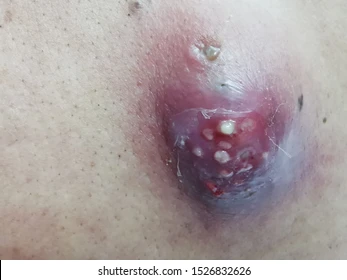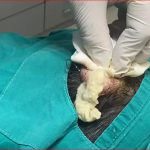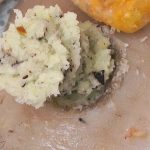How Do You Treat Big Cystic Acne and Blackheads?
Big cystic acne and blackheads are two different types of acne that require different approaches for safe and effective treatment. Here’s a breakdown of how to manage each:
🔴 1. Big Cystic Acne (Severe Inflammatory Acne)
What it is:
Cystic acne is the most severe type of acne. It forms deep, inflamed, and painful bumps filled with pus beneath the skin.
🔍 Causes:
-
Hormonal imbalances (e.g. during puberty, PCOS)
-
Excess oil (sebum) production
-
Clogged pores and bacterial infection (Cutibacterium acnes)
-
Genetics
✅ Treatment Options:
🩺 Professional/Prescription Treatments
-
Oral Antibiotics (e.g., doxycycline, minocycline)
Reduce inflammation and kill acne-causing bacteria. -
Oral Isotretinoin (Accutane)
A powerful vitamin A derivative used for severe, scarring acne. Long-term remission is possible. (Mayo Clinic) -
Hormonal Therapy (for women)
-
Birth control pills
-
Spironolactone (anti-androgen)
-
-
Corticosteroid Injections
Direct injection into cysts to reduce size and inflammation rapidly.
🧴 Topical Treatments
-
Retinoids (e.g., tretinoin, adapalene)
Unclog pores and reduce inflammation. -
Benzoyl Peroxide
Kills bacteria and helps exfoliate. -
Salicylic Acid
Helps break down dead skin cells and reduce inflammation.
🚫 Avoid:
-
Popping or squeezing cysts — this can lead to deep scars and infection.
-
Over-washing or using harsh scrubs.
⚫ 2. Blackheads (Open Comedones)
What they are:
Blackheads are clogged pores with oil and dead skin cells. The black color comes from oxidation, not dirt.
✅ Treatment Options:
🧼 Over-the-Counter Options
-
Salicylic Acid Cleansers
Dissolves oil and exfoliates inside the pore. -
Retinoids (Adapalene)
Encourages skin cell turnover to prevent clogged pores. -
Benzoyl Peroxide (2.5%–5%)
Helps kill bacteria and clear pores. -
Clay or Charcoal Masks
Help absorb oil and impurities from the skin.
🧰 Professional Treatments
-
Manual Extraction
Done by a dermatologist or esthetician with sterile tools. -
Chemical Peels (e.g., glycolic acid)
Exfoliates and clears pores. -
Microdermabrasion
Mechanical exfoliation to unclog pores and improve skin texture. -
Laser or Light Therapies
Can reduce oil production and kill bacteria.
📌 Tips for Both:
-
Stick to a gentle, consistent routine
-
Use non-comedogenic (non-pore clogging) products
-
Always apply sunscreen (especially when using retinoids or acids)
-
Wash pillowcases and makeup brushes frequently
🩺 When to See a Dermatologist:
-
Persistent, painful cysts
-
Deep scarring or discoloration
-
Over-the-counter treatments don’t help after 8–12 weeks
-
Acne affects your self-esteem or mental health
🔴 Managing Big Cystic Acne
Overview:
Cystic acne is a severe form of acne characterized by large, painful, deep-seated lumps under the skin. It’s often resistant to over-the-counter treatments and can lead to scarring if not properly managed.
Recommended Treatments:
-
Topical Therapies:
-
Benzoyl Peroxide: Reduces acne-causing bacteria.
-
Topical Retinoids (e.g., Adapalene, Tretinoin): Help unclog pores and reduce inflammation.
-
Topical Antibiotics (e.g., Clindamycin): Reduce bacteria and inflammation.
-
Combination Products: Fixed-dose combinations like adapalene with benzoyl peroxide are effective.
-
-
Systemic Therapies:
-
Oral Antibiotics (e.g., Doxycycline, Minocycline): Reduce bacteria and inflammation.
-
Oral Isotretinoin: Considered for severe cases; requires close monitoring due to potential side effects.
-
Hormonal Treatments: For females, oral contraceptives or antiandrogens like spironolactone can be beneficial.
-
-
Professional Procedures:
-
Intralesional Corticosteroid Injections: Reduce inflammation and pain in large cysts.
-
Laser and Light Therapies: May be used for persistent cases.
-
Important Notes:
-
Avoid Popping: Do not attempt to pop cystic acne; it can worsen inflammation and lead to scarring.
-
Consult a Dermatologist: Seek professional advice for personalized treatment plans.
⚫ Managing Blackheads
Overview:
Blackheads are open comedones formed when hair follicles become clogged with oil and dead skin cells, turning black upon exposure to air.
Recommended Treatments:
-
Topical Treatments:
-
Salicylic Acid: A beta-hydroxy acid that penetrates pores to exfoliate and reduce oil.
-
Retinoids: Help prevent clogged pores and reduce inflammation.
-
Benzoyl Peroxide: Reduces acne-causing bacteria.
-
Alpha Hydroxy Acids (AHAs): Exfoliate the skin surface. American Academy of Dermatology
-
-
Professional Treatments:
-
Comedone Extraction: Performed by professionals to safely remove blackheads.
-
Chemical Peels: Exfoliate the skin and clear pores.
-
Microdermabrasion: Removes dead skin cells and unclogs pores.
-
Important Notes:
-
Avoid Squeezing: Do not attempt to squeeze blackheads; it can cause irritation and scarring.
-
Consistent Skincare Routine: Maintain a regular skincare regimen to prevent new blackheads.
⚪ Managing Whiteheads
Overview:
Whiteheads are closed comedones formed when hair follicles become clogged with oil and dead skin cells, remaining under the skin’s surface.
Recommended Treatments:
-
Topical Treatments:
-
Salicylic Acid: Helps to exfoliate and clear pores.
-
Retinoids: Prevent clogged pores and reduce inflammation.
-
Benzoyl Peroxide: Reduces acne-causing bacteria.
-
Azelaic Acid: Unclogs pores and reduces bacteria.
-
-
Professional Treatments:
-
Comedone Extraction: Safely performed by professionals to remove whiteheads.
-
Chemical Peels: Exfoliate the skin and clear pores.
-
Important Notes:
-
Avoid Picking: Do not pick or squeeze whiteheads; it can lead to scarring.
-
Use Non-Comedogenic Products: Choose skincare and makeup products that do not clog pores.
✅ General Skincare Tips
-
Gentle Cleansing: Use a mild, non-comedogenic cleanser twice daily.
-
Moisturize: Even oily skin needs hydration; choose oil-free, non-comedogenic moisturizers.
-
Sun Protection: Use a broad-spectrum sunscreen daily to protect skin and prevent hyperpigmentation.
-
Avoid Touching Face: Minimize touching your face to reduce the transfer of oils and bacteria.
Note: Always consult with a dermatologist to determine the most appropriate treatment plan for your specific skin type and condition.


